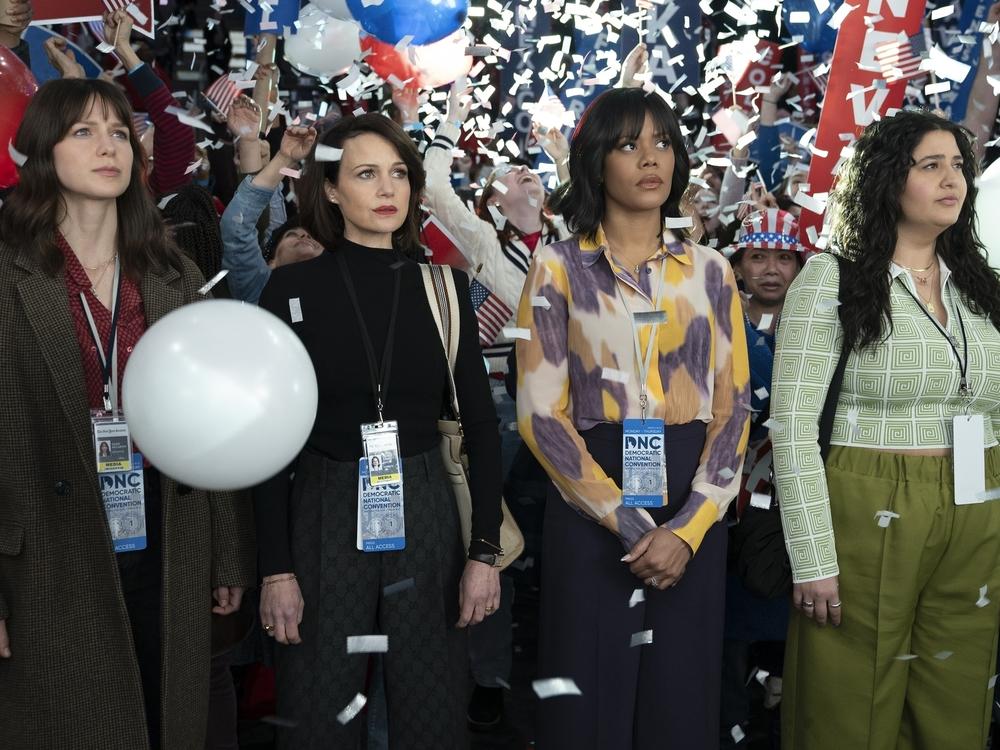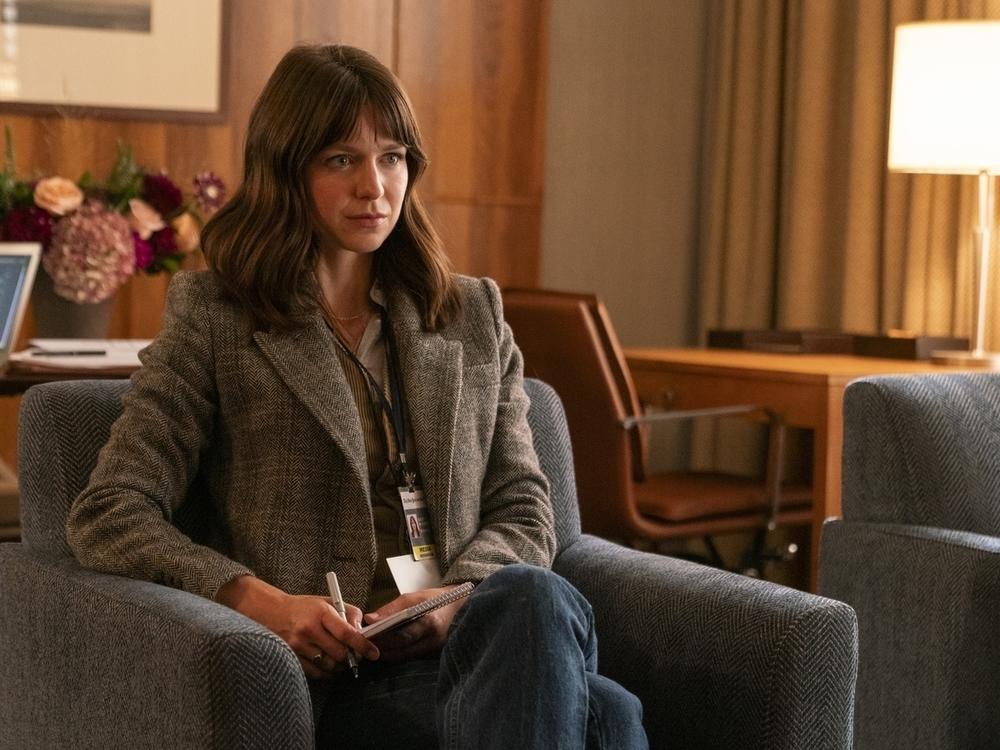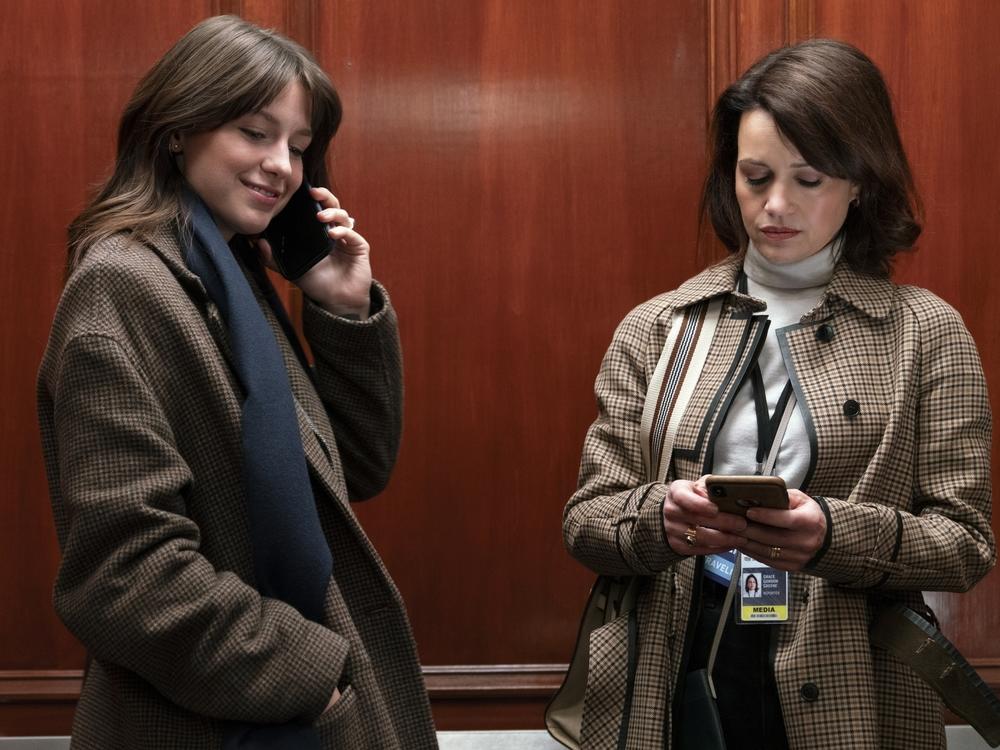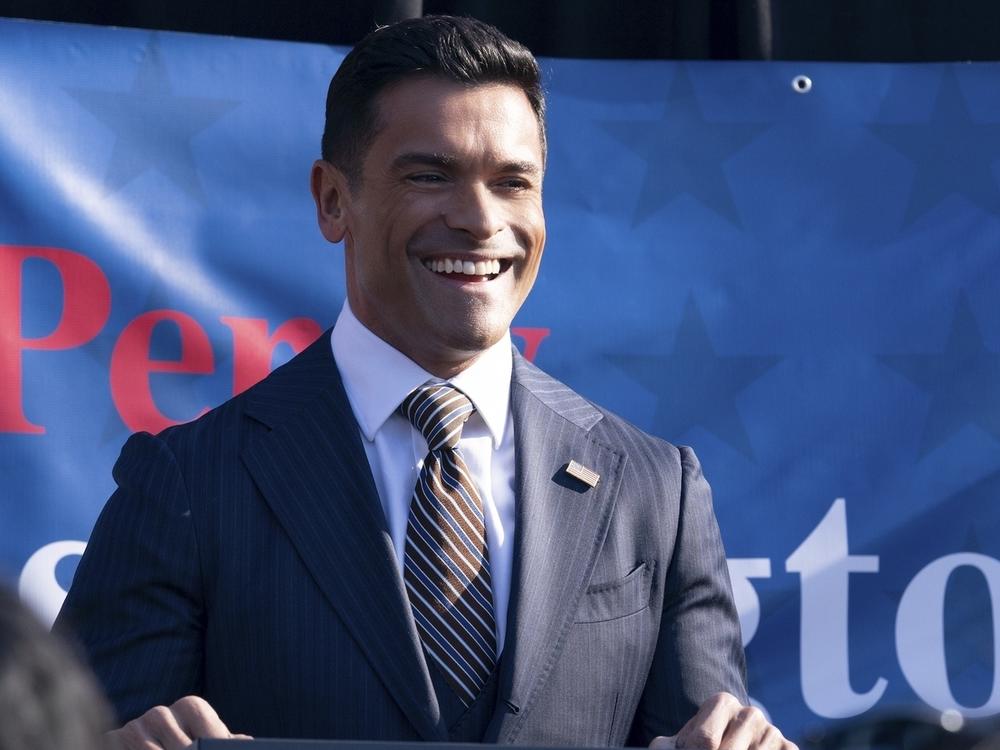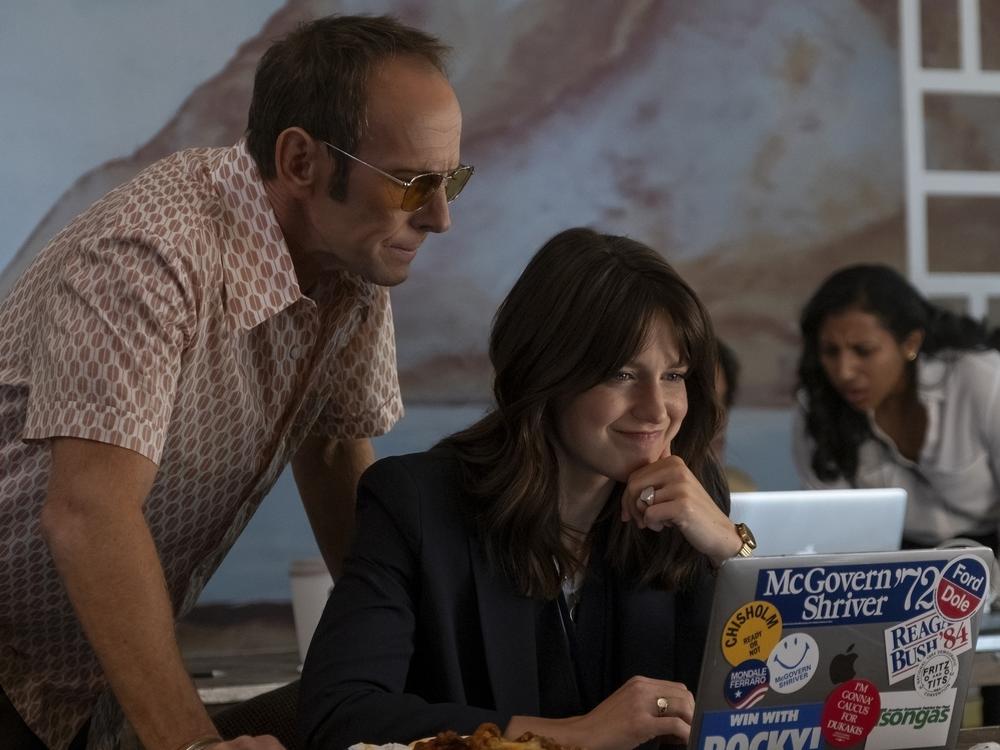Section Branding
Header Content
'The Girls on the Bus' was written by a political journalist who's been there
Primary Content
The first question I have for Amy Chozick, an executive producer and co-creator of the new Max series The Girls on the Bus, is a simple one.
Why is this fiction?
After all, the series is inspired by elements from Chozick's 2018 book, Chasing Hillary, which she wrote after covering Hillary Clinton's presidential campaign for The New York Times.
So why is the Max show, centered on four female political journalists, set in a fictional world with made-up politicians and media outlets, instead of exploring the very real challenges Clinton faced while running for president against Donald Trump in 2016?
"I felt, just as a writer, fatigue in writing about real life," says Chozick, who also covered Clinton and Barack Obama for The Wall Street Journal. "I think the country feels fatigue....[Also] politics is dark and divisive. And I think our show is a light dramedy....I almost want it to be an escape. That was sort of our goal; this alternate reality that is fun, light, kind of escapist."
The Girls on the Bus unfolds like a mind meld between The Paper and Primary Colors, starring Supergirl alum Melissa Benoist as Sadie McCarthy, an ambitious, hard-charging young reporter covering the presidential election for the fictional New York Sentinel. Sadie befriends three other women on the campaign trail, including a newbie online influencer, a woman working for a Fox News-style cable TV outlet and a super-skilled veteran reporter played by Carla Gugino.
Chozick teamed with experienced TV producer Julie Plec (Vampire Diaries) to create the show, which also involved mega-producer Greg Berlanti (Dawson's Creek, Riverdale, Supergirl). Relaxing in a conference room at Berlanti's offices in Burbank, Chozick admits it was a long, strange trip from her life in journalism to work as a TV scribe; our Q&A below has been edited for clarity and length.
How did you make the transition from journalism to TV writing?
I had a very long career in journalism. But when I went to write my book, a memoir of the years I spent covering Hillary Clinton, my mentor, David Carr at The New York Times — the late David Carr — said, "You have to go to a magical place where writers live. You have to get journalism out of your head." Because it was a memoir. It was very personal. And I really, really enjoyed writing in my own voice and writing just more creatively, kind of outside the confines of newsprint.
How did you decide to focus the TV project on only one chapter of your book?
We knew we didn't want to do a political show. We knew we didn't want to relive 2016 or have any real politics in it. And [Berlanti] thought the heart of the show was this chapter called "The Girls on the Bus," [which was] about how the era of The Boys on the Bus — this, like, rollicking troupe of guys covering politics in the '70s — was gone, and women had really become the campaign reporters. And so we set out to do this this show about a found family of female journalists become friends on the bus. And yes, I really enjoyed playing with my imaginary friends.
Sadie seems to really want to believe in the candidates she's covering. That may seem a little odd to some experienced journalists, but you say that's something you went through too?
There's an anecdote in my book that I think sort of epitomizes Sadie's journey. I went to my first Hillary [Clinton] rally and everybody's getting excited and they stood up and cheered. And so I cheered, too.
And all the other reporters are like, "What the hell are you doing? Sit down."
As a journalist, you eventually understand you sort of cede your ability to be this excited about candidates, because you see them as humans. You're like, "Oh, [Obama's] kind of cold and aloof with five people, but super amazing with 50,000."
So I think Sadie eventually realizes, "Oh, this person I thought I believed in is human and flawed."
There is a scene where Sadie asks one candidate she's interviewing, "How are you going to break our hearts?"
I always felt, whether it was covering Hillary or Obama, it's like being in love, but there's no love. You think about the person all the time. I would have dreams about the candidates. It's all you think about. They think about you never. [Laughs] So there is this kind of relationship that is almost like a one-sided love. And that was something we really wanted to explore; her journey of realizing, "Oh, I can't be in love with these candidates."
The other things journalists often dislike about films and TV shows about journalism – especially female journalists – is storylines where a female reporter sleeps with someone they're covering. But that happens in this story.
If you keep watching, you'll see our show flips that on its head. Sadie had a relationship with a guy who was very low-level. It was not a conflict. But now, four years later, he is in a position where it could be a conflict. She gets in a lot of trouble and has to defend herself to a disciplinary committee.
It really starts her thinking about something that I also thought a lot about, which is that the "boys on the bus" were sleeping with whoever the hell they wanted. And they never got called out. And that's the fine line that women have to walk. For one, you're married to this job. It is your life. You are on the road constantly. So who are you going to meet? [Sadie] has to really come to terms with this double standard. And also, it's a TV show. There has to be some sex. But the thing that we were adamant about is, like, none of these girls sleep with someone to get the story.
People criticized you for reporting on Hillary Clinton's email server, which seemed to damage her campaign but didn't amount to serious wrongdoing. Does that kind of reporting affect the trust the public has in journalists?
I wrote pretty extensively in the book about how I felt like the email story was a significant story when a presidential candidate is under FBI investigation. I just regretted that it was the only story. You know, I think these things that tend to get a lot of attention and clicks and likes and ratings consume issues that actually matter to people's lives. I used to be very bitter that I would fly to Michigan and write a 2,000-word story about Hillary's economic plan and no one read it. Then [critics] would say, "All you write about is her emails." But now I understand that it's actually...that was my fault. The impetus is on us to make those other stories break through.
You've spoken about this a bit. But what's so different about the girls on the bus, versus the boys?
This is something that that one of Obama's top aides once told me, which was: by the time women and minorities get the job, the job is vastly diminished. It is true that by the time this bus looks the way it looks — with a diverse group of women — the news industry is dying. The candidates hardly talk to them. It's impossible for anything to break through. I mean, these guys, the "boys on the bus," they could write a story for the newswires and it changed the conversation across the whole country. This isn't directly reflected in the show. But I do think that there is something to that.
It doesn't seem as if the general public even understands what journalists do.
I had a big controversial story about Elizabeth Holmes recently. (Chozick wrote this story for The New York Times last year, which was criticized by some for making Holmes, who was convicted of fraud in connection to her blood-testing company, Theranos, look too sympathetic.) I spent a lot of time on it. I'm with her in San Diego. But people assume that I was just given this access because she wanted to get out of prison. You know how hard it is to get anyone to talk to you, especially someone who doesn't talk to the media. But there's this perception [that] it's all kind of seedy and you are doing this just to promote this person or you got this so easily. But it's not true.
Do you ever miss working in journalism full time?
Yeah, I do. I miss journalism. I really miss the newsroom on big news nights, you know, like midterms [election coverage] and we're getting pizzas or there's a debate. And then my friends have told me I'm missing something that doesn't exist anymore, because after COVID, nobody goes into the office. So I feel like I am romanticizing something that doesn't exist.
Edited by Jennifer Vanasco; web produced by Beth Novey.
Correction
An earlier version of this story misspelled the last name of Amy Chozick as Chozik.
